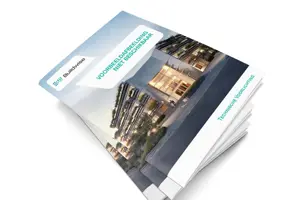Frontrunner small companies are nowadays developing locally new circular business models with construction resources. This paper presents the genesis, the potential environmental impact, and the business model of producing and marketing greenhouses made of salvaged materials according to the industrial symbiosis principles and the economy of functionality. A designer has recuperated formwork wood on a construction site and glass from reclaimed windows on a demolition site to reuse them in the production of a greenhouse. After cleaning, the wooden elements are calibrated, then assembled to create the greenhouse. Thanks to reversibility and standardization, the greenhouse can be easily repaired, extended and disassembled. In addition to the high recycled content of the greenhouse, all these characteristics make the greenhouse circular by design, and from 3.7 to 8 times potentially more environmental-friendly than a greenhouse in aluminium, as shown by a comparative life cycle assessment (LCA). According to the principle of the economy of functionality, the greenhouse is marketed as a tool to allow its users to reach an objective and not only be sold as a product. In some cases, the greenhouse could remain the property of the producer, while the users receive support to grow fruits and vegetables. The project shows that developing new business activities and reducing the environmental impact of construction sites are goals that can be achieved in parallel in a circular economy approach. We expect that this project will convince other entrepreneurs that innovative construction waste treatment can provide large practical, economic and environmental advantages.
